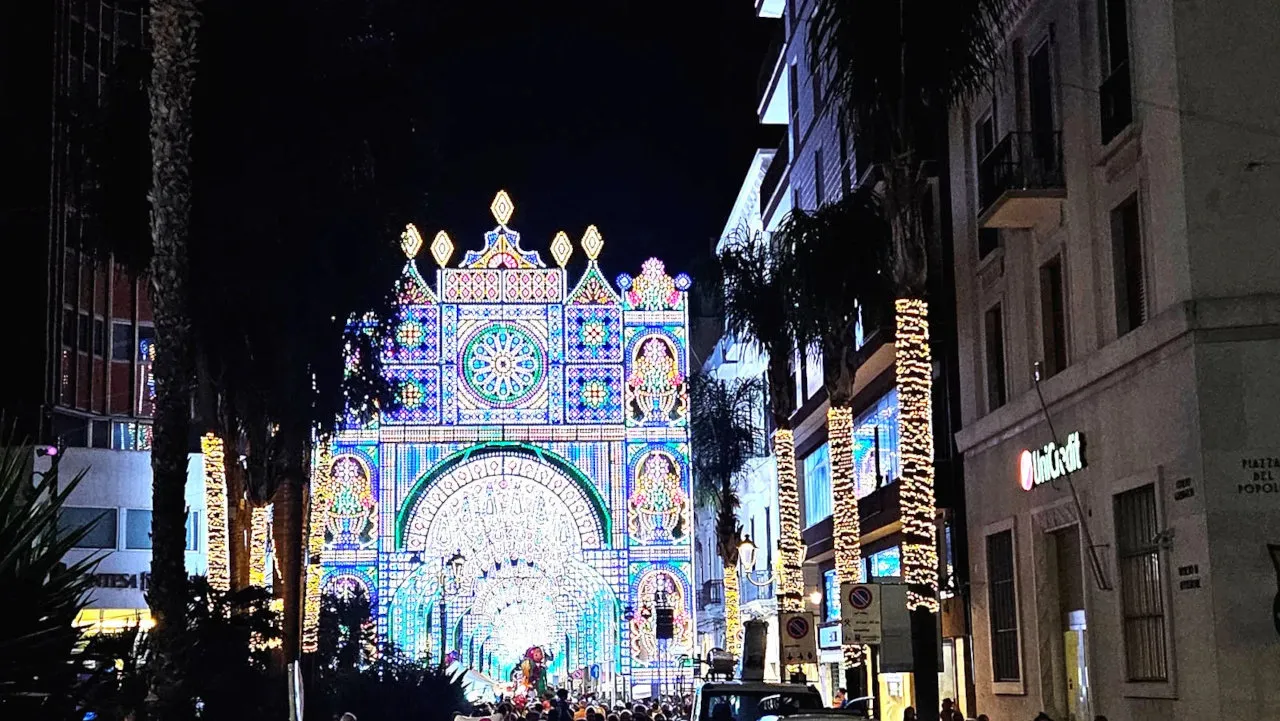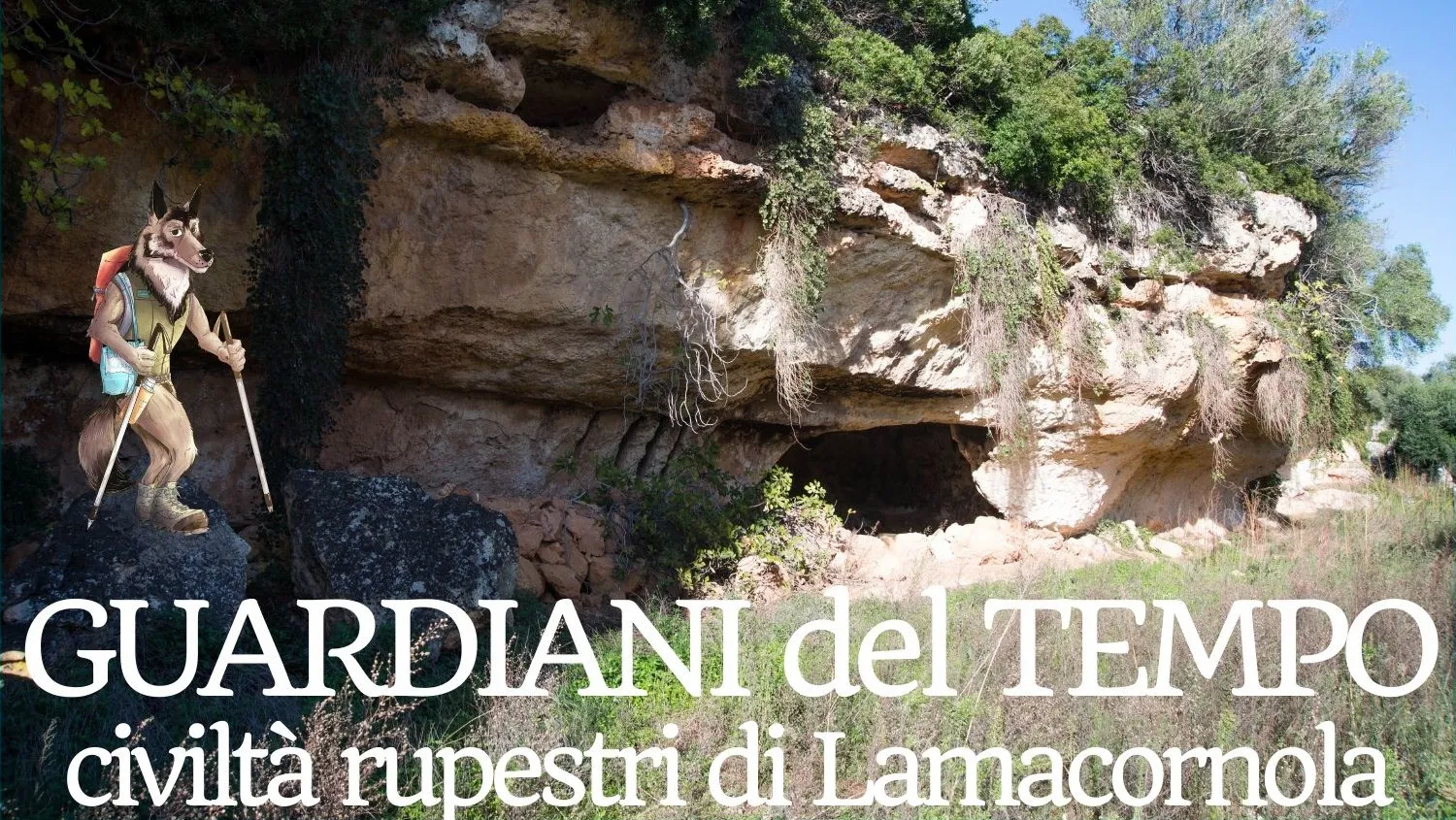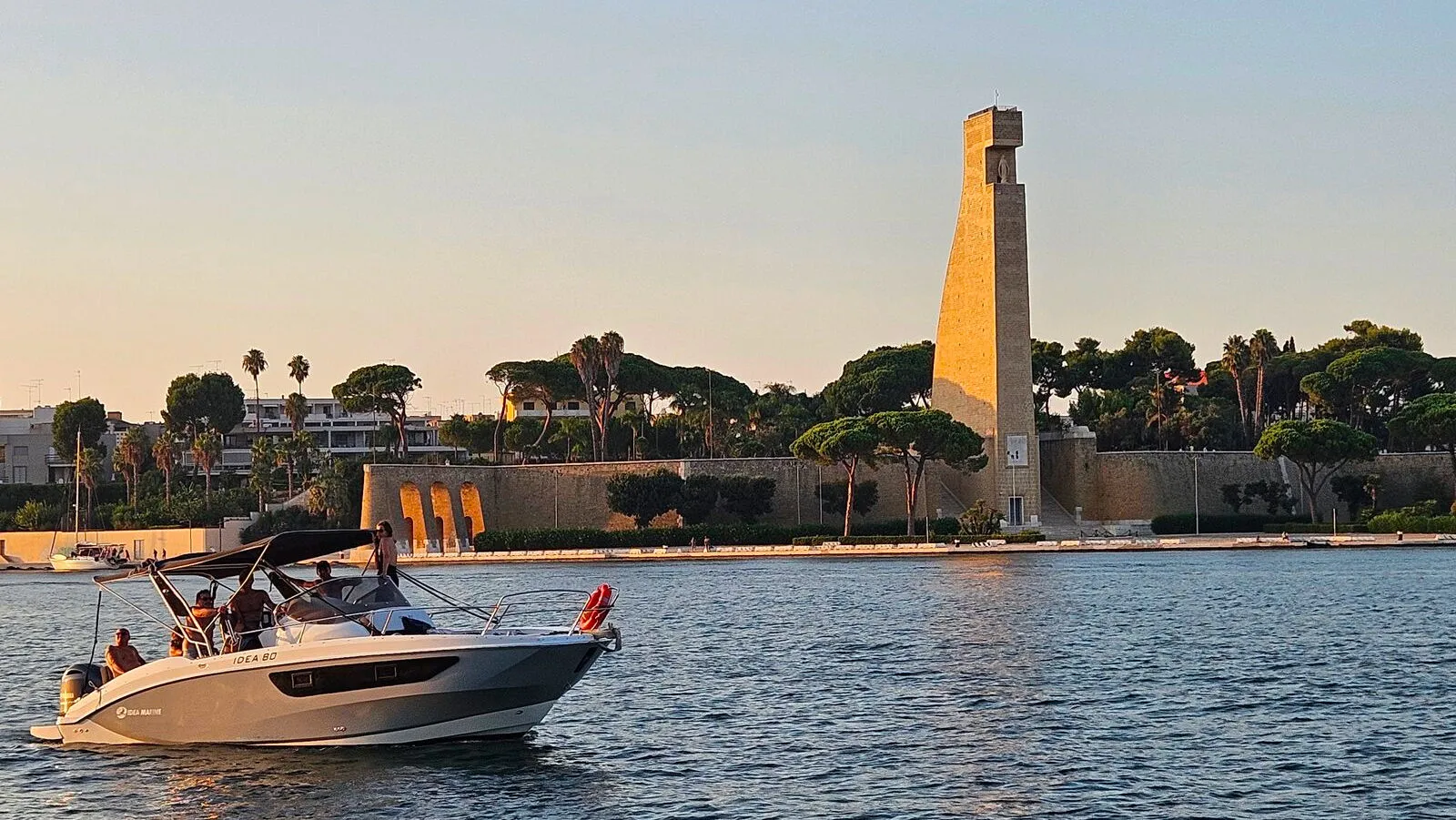Zoosafari - having fun in Puglia - Fasano
Updated at: 25-01-2025
How this content can help you:
- Discover the Fasano Zoo Safari, the second largest wildlife park in Europe.
- Learn how to reach the park by car, train, bus, or plane.
- Find out about ticket prices and seasonal opening hours.
- Explore the main attractions: the car safari and Fasanolandia.
- Discover the animals you can see and their habitats.
- Get information on visitor services and safety measures.
- Learn about the park's conservation efforts and educational programs.
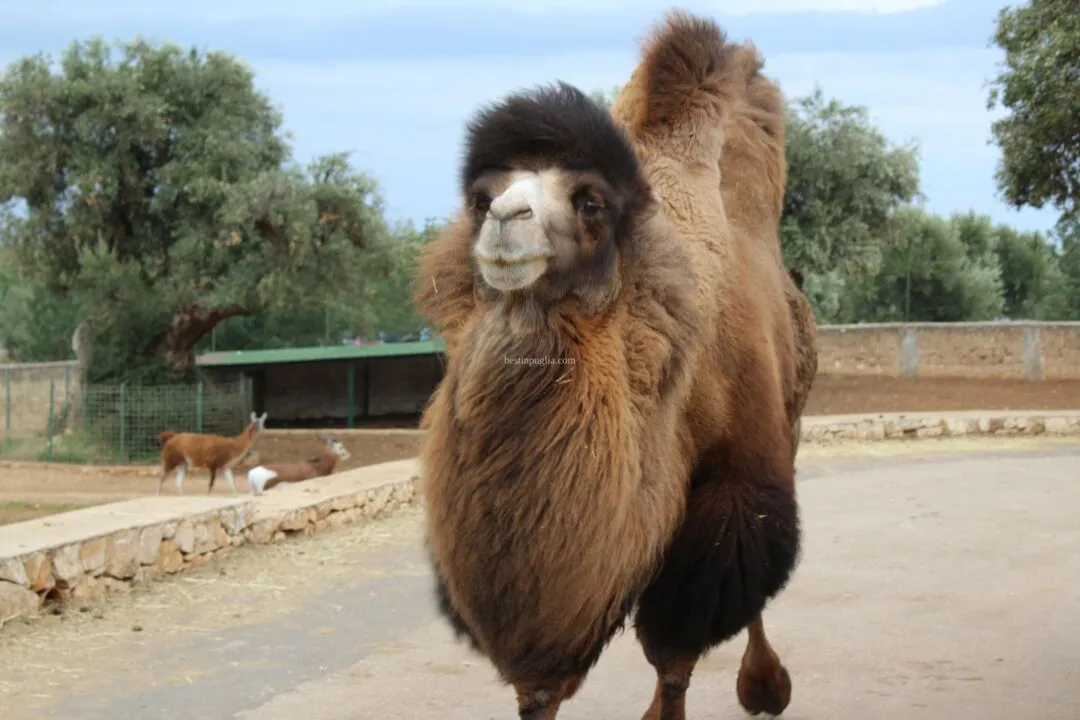
Zoosafari di Fasano is located in Fasano, a municipality in the province of Brindisi, in the Puglia region of southern Italy. It is one of the main tourist attractions in Puglia. Its strategic location is approximately 10 km from the center of Fasano and just a few kilometers from the Adriatic coast.
Zoosafari di Fasano is the second largest wildlife park in Europe. The park offers a unique experience thanks to its combination of zoo and safari, making it one of the key tourist attractions in Puglia.
How to Reach Zoosafari di Fasano
Address: Via Cisternino, 233, 72015 Fasano (BR), Italy
By Car:
- From the A14 Motorway: If arriving from the A14 motorway, take the exit for Fasano and follow the signs to Zoosafari. The park is well-signposted and easily accessible.
- From the SS16 State Road: If coming from the SS16, follow the signs for Fasano and then for Zoosafari, which is located near the city.
By Train:
The nearest railway station is Fasano, which is connected to major Italian cities. From the station, you can take a taxi or a bus to reach the park.
By Bus:
There are also bus services connecting Fasano with other cities in Puglia and major tourist destinations in the region.
By Air:
The nearest airport is Brindisi Airport (Aeroporto del Salento), located about 50 km from Fasano. From the airport, you can rent a car, take a taxi, or use public transportation to reach the park.
Admission Prices
Ticket prices for Zoosafari di Fasano may vary depending on the season and any special offers.
Full Ticket:
Adults: Approximately €30-34 per person.
Children (4-10 years): Approximately €25 per person.
Children under 3 years: Admission is usually free.
Combined Tickets:
Some packages offer combined admission to Zoosafari and Fasanolandia at a discounted price. These packages may also include other special offers or promotions.
Opening Hours
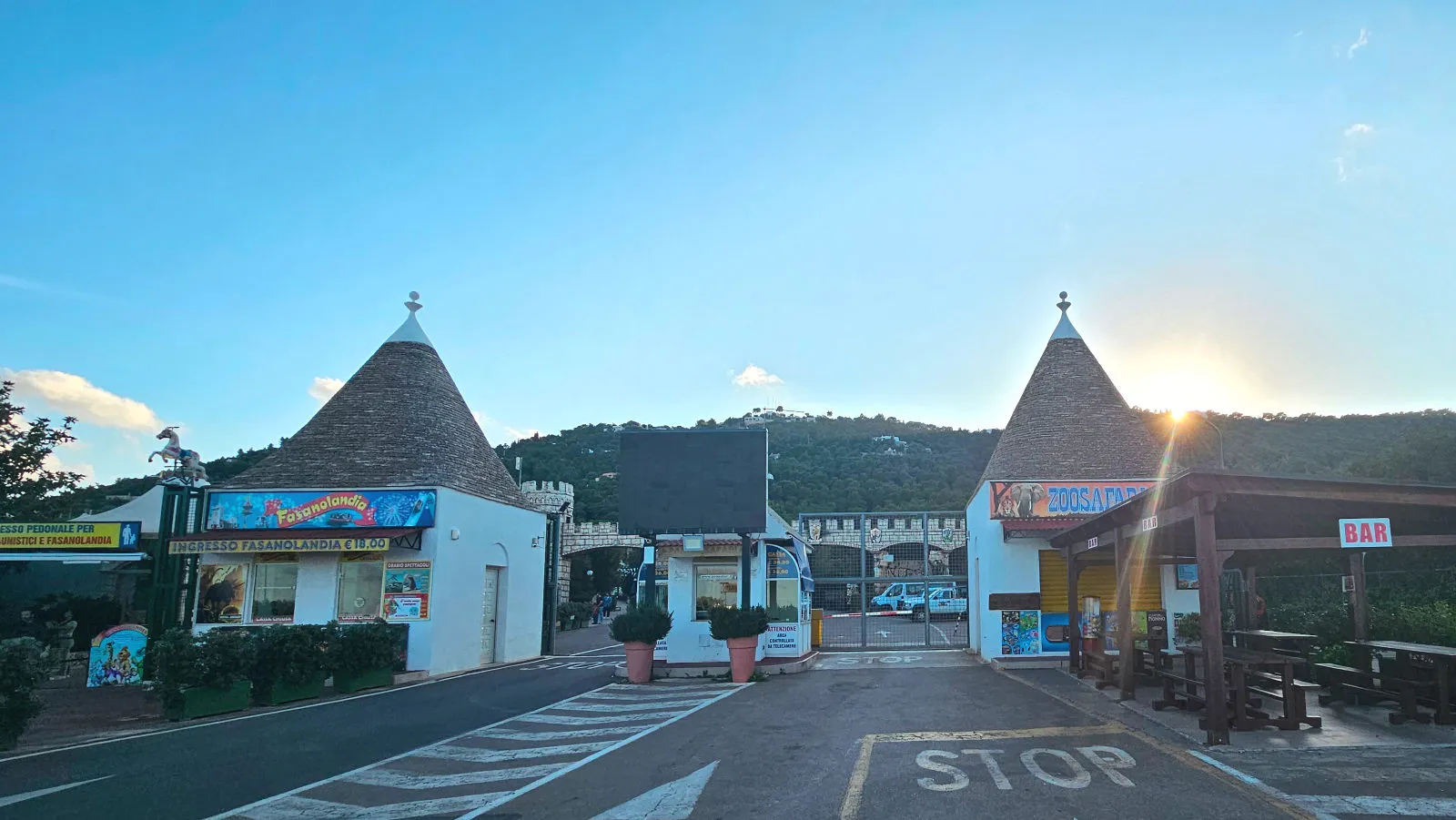
The park is generally open every day of the week.
April – September: Typically from 9:00 AM to 7:00 PM.
October – March: Generally from 9:00 AM to 5:00 PM. During these months, the park may have reduced hours and could be closed on certain days, such as during the Christmas holidays.
Accessibility and Inclusivity
Parking and Transport: The park has reserved parking for people with disabilities, located close to the main entrance and major attraction areas. These parking spaces are well-signposted and designed to facilitate access to the park's facilities.
Accessible Paths: All main pathways and attraction areas are designed to be accessible to people with reduced mobility. The trails and roads are paved and free of architectural barriers, making it easier to navigate with wheelchairs and strollers.
Assistance Services: The park offers assistance services for people with visual and hearing impairments. Braille maps and listening assistance devices are available upon request. Additionally, it is possible to book special guided tours for groups with specific needs, ensuring a personalized and comfortable experience.
Dining and Refreshment Points: Many restaurants and refreshment points in the park are equipped with accessible features and offer menus that can be adapted to the dietary needs of people with disabilities. Assistance can be requested for ordering and receiving food without barriers.
Zoosafari di Fasano: A Journey Between Wild Fauna and Fun
Zoosafari di Fasano is distinguished by its dual offering, divided into two main thematic areas that ensure different and fascinating experiences: Zoo Safari and Fasanolandia.
Zoo Safari
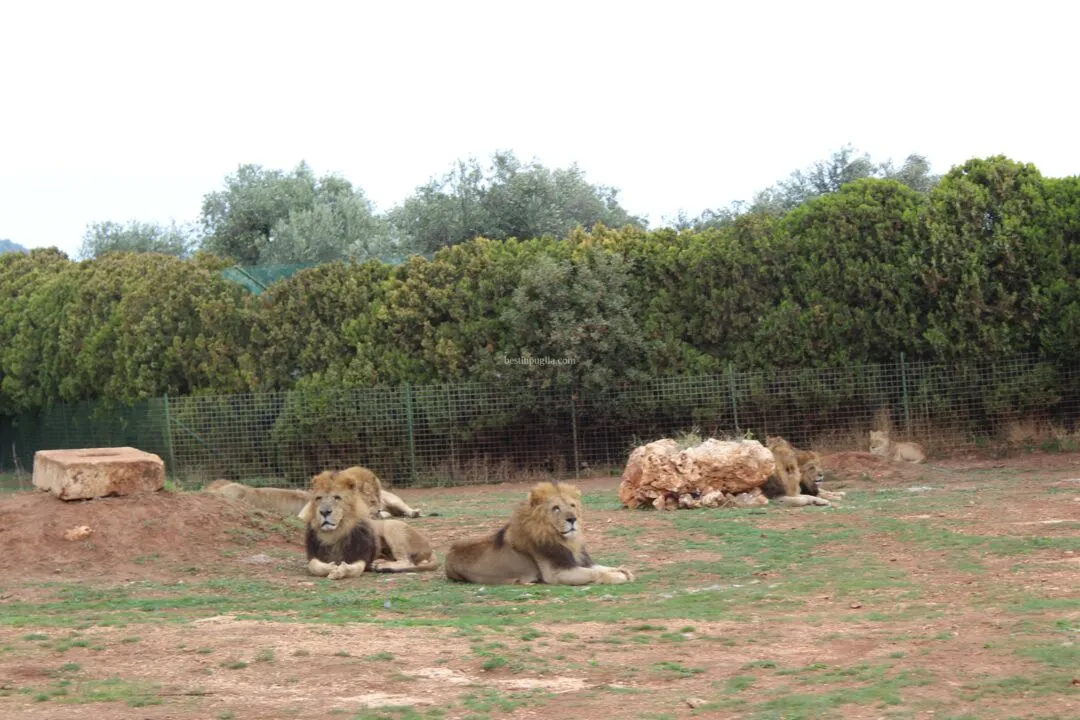
The heart of the park is represented by the Zoo Safari, a vast area that offers an immersive adventure aboard your own car. Visitors can travel a circuit that crosses various habitats, each hosting different species of exotic animals. The route is designed to provide a true safari experience, with the opportunity to observe closely animals such as lions, tigers, elephants, giraffes, zebras, and rhinoceroses.
The spaces are large and carefully designed to best replicate the animals' natural environments. This allows them to move and behave as they would in their natural habitat.
The car-based visit allows for maintaining a safe distance, thus ensuring adequate protection for both the animals and the visitors, avoiding disturbance. The close-up observation provides a unique opportunity to appreciate the beauty and majesty of wildlife in an environment that strives to respect their natural needs.
Fasanolandia
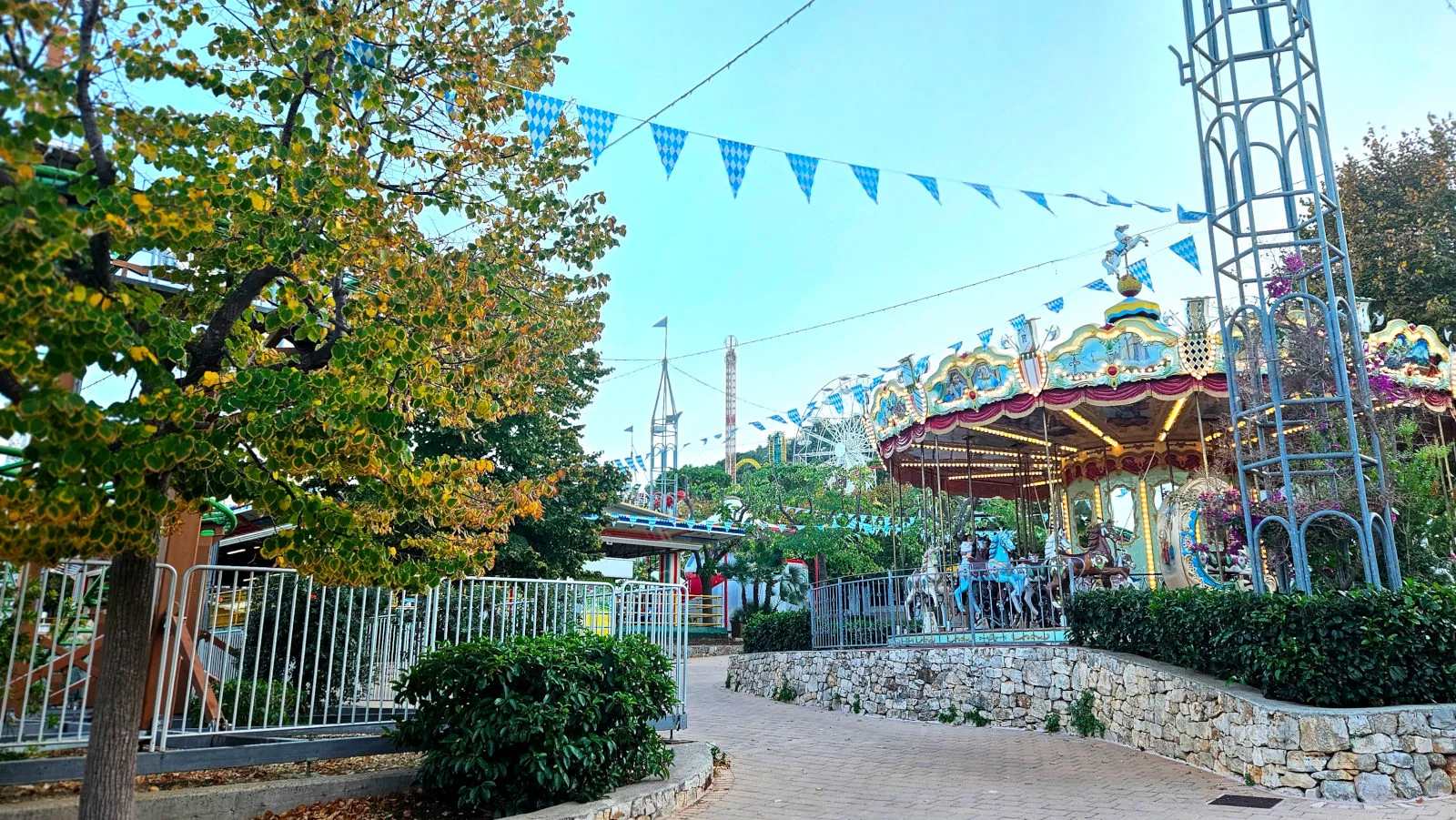
Adjacent to the safari, Fasanolandia represents the section dedicated to pure fun and entertainment. This amusement park is designed to offer a range of attractions and rides suitable for all ages. It is a lively and colorful area where families and visitors can enjoy various recreational activities.
Fasanolandia boasts a wide selection of rides for children, mechanical games, and live shows. Each attraction is designed to offer moments of fun and entertainment, creating a vibrant contrast with the more contemplative safari experience.
The thematic areas and recreational activities make this part of the park ideal for those seeking a carefree and dynamic outing, thus providing a complete day of entertainment
€ 208
Visiting the Zoosafari di Fasano
The drive-through safari usually lasts about 1-1.5 hours, depending on traffic and driving pace.
The route is well-signposted and divided into thematic areas that replicate various natural habitats. The road is paved and designed to ensure safe driving through the different zones of the park.
Wildlife to Observe
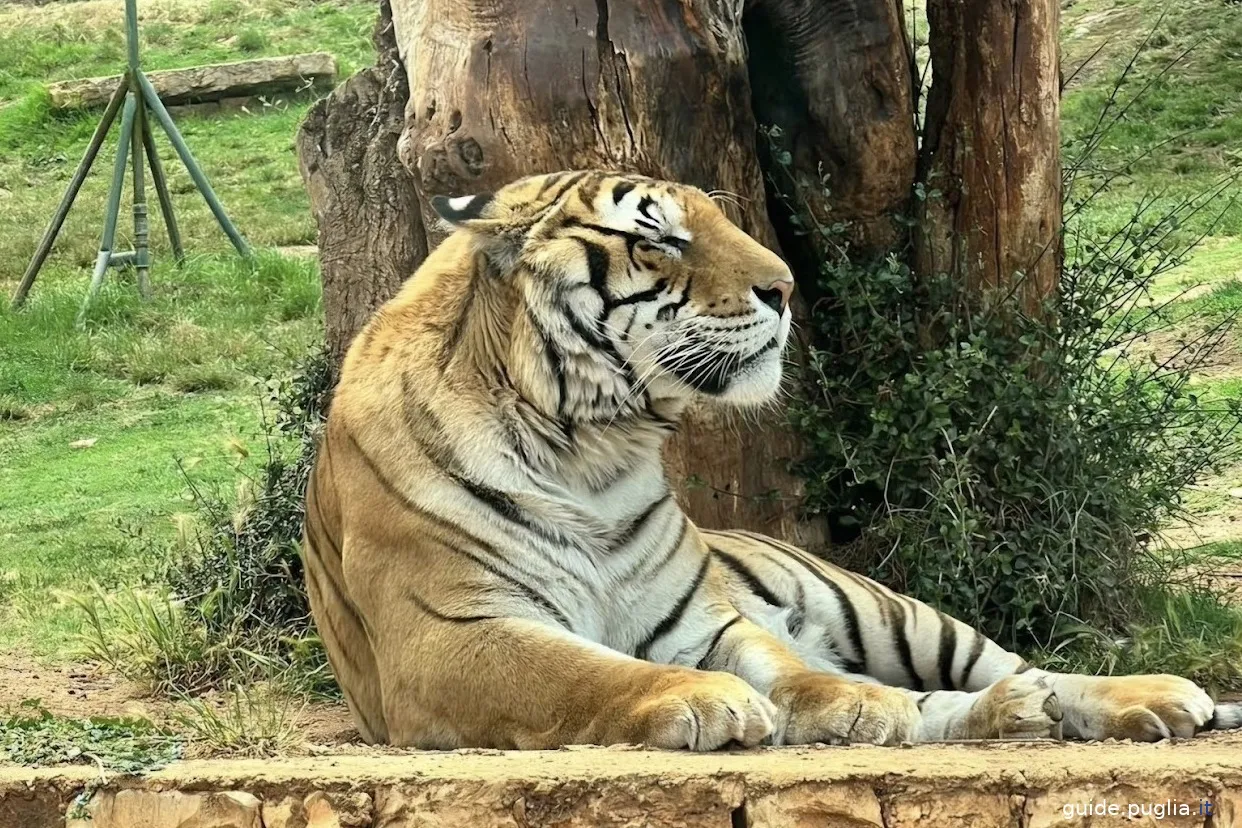
Lions and Tigers: These predators live in spacious enclosures that simulate their African and Asian origins. You might see lions lounging in the sun, tigers exploring their space, or hunting as they would in the wild. The enclosures are designed to offer a clear view while maintaining a safety barrier between the animals and visitors.
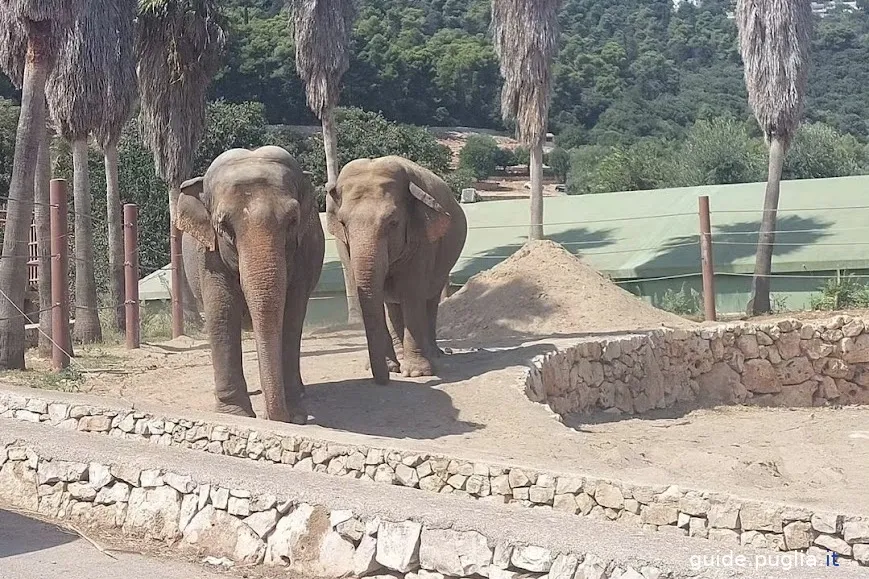
Elephants: The elephants live in an area resembling the savanna, with ample space to move freely and interact with each other. You might see elephants feeding, playing with objects, or bathing. Often, visitors can also spot young calves approaching, making the experience particularly enchanting.
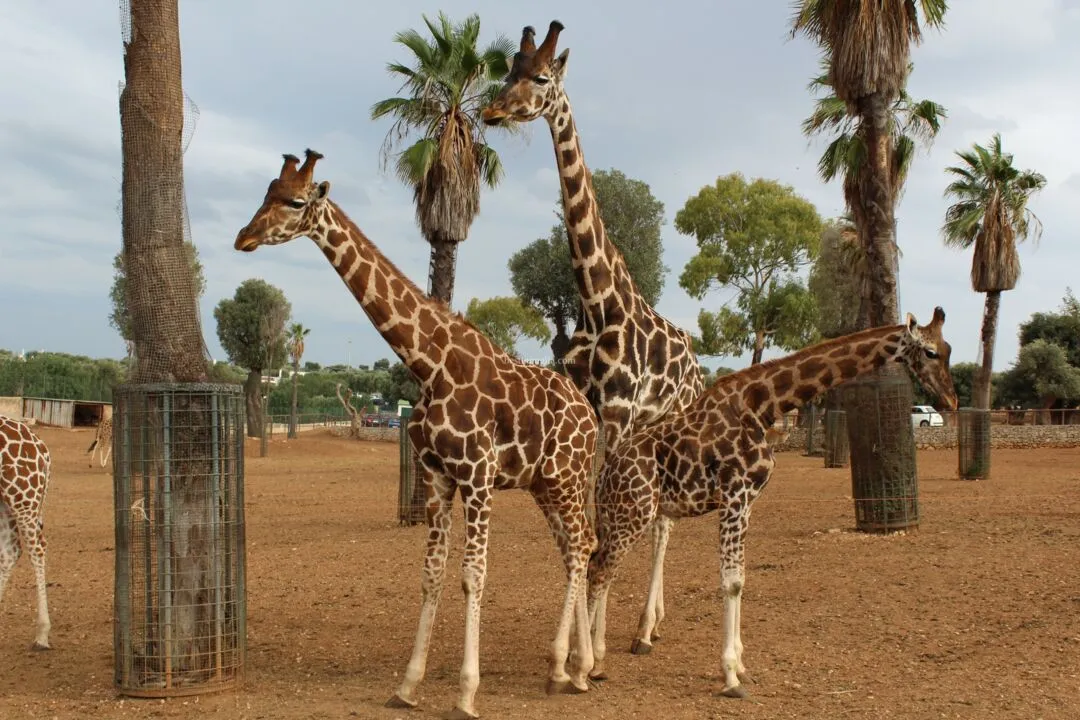
Giraffes and Zebras: These animals are housed in enclosures that simulate the expansive plains of the African savanna. Giraffes can be seen feeding from trees, while zebras move around in groups. The giraffes, with their long necks, can come close to vehicles, providing excellent photographic opportunities.
Rhinoceroses and Hippopotamuses: These animals live in spaces that replicate their natural environments, such as wetlands for hippos and prairies for rhinos. Hippos are often visible while bathing or resting in water, while rhinos can be spotted grazing or moving around their habitat.
Thematic Zones
African Savannah: This section of the park is designed to replicate the savanna, with wide grassy areas and few trees, where animals such as giraffes, zebras, and rhinos can be observed. The expansive views and the chance to see animals in motion make this section particularly scenic and interesting.
Asian Forest: This area replicates a denser, shadier environment, similar to Asian forests. Here, you will find animals such as tigers and other mammals from the Asian region. This habitat is designed to provide shelters and exploration areas for shyer and more reserved animals.
Ungulate Zone: An area dedicated to ungulates, such as deer and antelopes, with spaces that mimic their natural habits and behaviors. You will see different groups of animals living together, interacting with each other and their surroundings.
Zoosafari during the Holidays
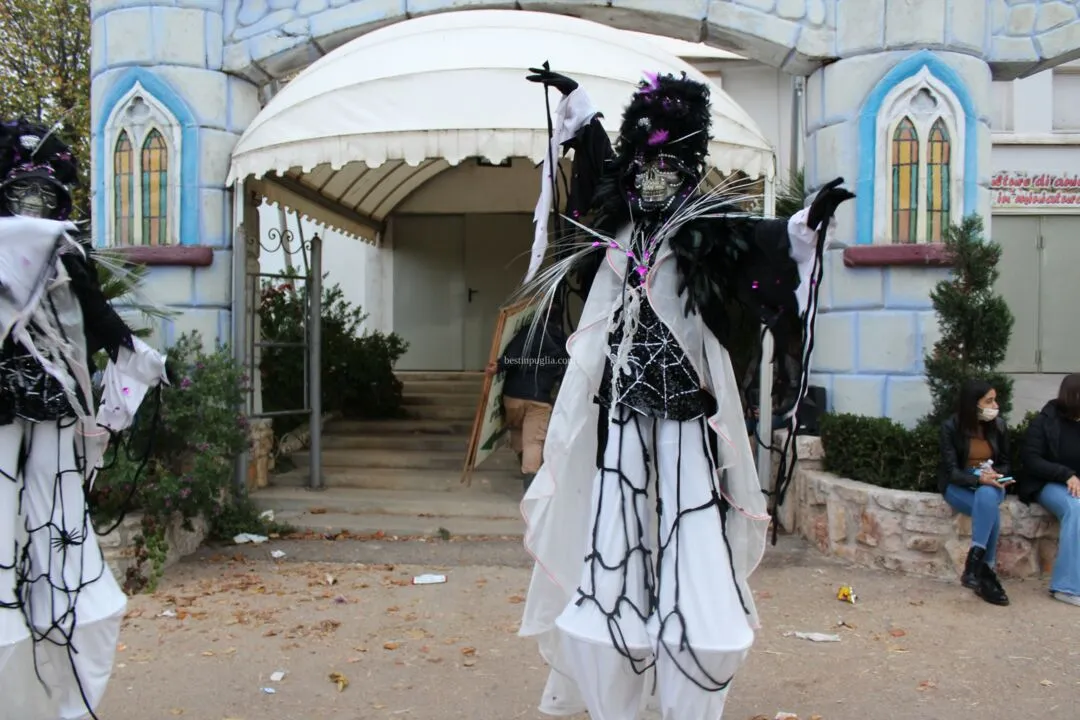
Zoosafari di Fasano stands out not only for its fascinating safari route but also for its festive and special events that enrich the visitor experience.
These events are organized to offer unique entertainment moments and create extraordinary atmospheres throughout the park.
During seasonal holidays, such as Christmas and New Year’s, the park undergoes a complete transformation. The atmosphere is enhanced by festive decorations, sparkling lights, and Christmas-themed setups that bring a magical environment to life. Visitors can enjoy Christmas shows, meet Santa Claus, and participate in various family activities.
Similarly, during Halloween, the park adopts a spooky and fun atmosphere. Themed decorations, haunted mazes, and special activities offer an immersive experience that excites visitors of all ages.
Additionally, the park hosts themed parties throughout the year, which may be related to particular cultures, musical celebrations, or other special occasions. These events often include live performances, games, and themed activities taking place in different areas of the park, providing moments of leisure and fun.
Educational and special events are another significant part of the park's offerings. Environmental education days and conservation efforts allow visitors to participate in seminars, workshops, and meetings with wildlife and plant experts.
These events aim to raise awareness and educate the public on important issues related to nature and animal protection.
Furthermore, wildlife days celebrate specific animal species or conservation themes, with activities and presentations offering a deeper understanding of biodiversity and conservation.
During these special events, the park is decorated and set up to reflect the day's theme. The rides and attractions may be themed to offer unique fun experiences, while the food and beverages available at the park's stands and restaurants often follow the event theme, offering special treats that further enhance the visitor experience.
Safety and Behavior: Driving and Rules
Maintain Distance: It is crucial to keep a safe distance from the animals and not to leave your vehicle.
Follow Rules: Adhere to the park's guidelines and specific rules for the visit, such as not feeding the animals and not using flash photography.
Limited Interaction: Although the drive-through allows for close viewing, it is important to respect the animals' behavior and not attempt to interact directly with them.
Visitor Services
Picnic Areas and Dining: The park offers well-equipped picnic areas where visitors can enjoy an outdoor meal immersed in nature. These areas have tables and benches and are strategically placed to provide a resting point during the visit.
Additionally, the park’s restaurants and refreshment stands offer a variety of food options, from hot and cold dishes to snacks and beverages, catering to different tastes and dietary needs. Some restaurants may also offer specific children's menus and dishes suitable for vegetarians or people with food intolerances.
Souvenir Shops: Inside the park, there are several souvenir shops selling gadgets and themed items related to animals and nature. These shops offer a selection of products such as toys, plush animals, clothing, and collectible items that allow visitors to take home a memento of their experience.
Assistance and Information: Information points are available throughout the park where visitors can seek assistance and obtain detailed information about attractions, services, and ongoing activities. The staff is trained to provide support and answer questions, helping to make the visit as smooth as possible.
Wildlife Conservation and Education
Conservation Projects
The Zoo Safari de Fasano is also distinguished by its commitment to wildlife conservation. By participating in local and international conservation projects, the park plays an active role in protecting endangered species.
These projects include captive breeding programs for threatened species, aimed at supporting their population and, if possible, reintroducing them into their natural habitats.
The park collaborates with global conservation organizations to support initiatives aimed at preserving biodiversity and combating environmental threats such as deforestation and poaching. Additionally, the zoo contributes financially and logistically to protection and research projects in various regions of the world, amplifying the impact of its conservation efforts.
Educational Programs
The Zoo Safari de Fasano is also dedicated to educating and raising public awareness about environmental conservation and animal protection. To this end, the park offers a variety of educational programs aimed at schools, groups, and families.
Educational programs include themed guided tours, interactive workshops, and educational activities that allow participants to deepen their knowledge about animals and their habitats. Children and students can learn the basics of animal biology and ecology, as well as discover the challenges wildlife faces in their natural environments.
The educational activities are designed to be engaging and stimulating, using resources such as informational panels, interactive models, and educational games. The goal is to promote a respectful and caring attitude towards animals and the environment, encouraging new generations to become informed and active citizens in the protection of nature.
History and Foundation of the Zoo Safari de Fasano
The Zoo Safari de Fasano has a long and fascinating history that began in 1973, the year of its inauguration. It is one of the pioneers of safari parks in Italy, created with the vision of offering an immersive experience that replicates the natural environment of the animals. Founded by a group of wildlife enthusiasts and environmentalists, the park started with a limited number of species and has progressively expanded its offerings.
Initially, the Zoo Safari de Fasano was relatively modest, but it soon attracted attention for its innovative concept of a drive-through safari.
The idea of allowing visitors to explore the area in their own vehicles, observing animals in their natural environment, was a novel concept in the landscape of Italian zoological parks. This approach met with great success and led the park to expand its facilities and diversify the species it housed.
Over the years, the zoo has added new thematic areas and numerous animal species. This development has been driven not only by the desire to enrich the visitor experience but also by a growing commitment to the care and conservation of animals.
The park's growth has paralleled the evolution of best practices in animal management and welfare, solidifying its reputation as a major tourist and zoological attraction.

